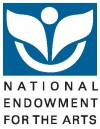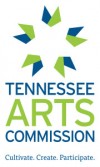Portraiture in Colonial America
Level: Adaptable for 2-12
Background Information on American Colonial Art
During the colonial time period, the wealthy plantation owners preferred to have their portraits painted by English painters, and the style most used for these portraits was called English Baroque. The American painters of this time also used this technique. One of the best American Colonial portrait painters was Gilbert Stuart, the artist of the Landsdown Portrait of Washington. The work owned by the West Tennessee Regional Art Center is a copy of one of the two originals that was probably done by his daughter. Gilbert Stuart gave such life to the portraits that he painted, that one of his works was used as the portrait on the American Dollar Bill. Stuart usually tried to amuse his subjects while working, but this only seemed to annoy Washington who is depicted in this work and in his portrait on the dollar bill with a very dour look. In Landsdown Portrait, one can see Washington the statesman rather that Washington the military leader. Washington has his hand thrust toward the pen while the sword hangs at his side. Though Washington did not say this, he did believe the statement that “The Pen is Mightier than the Sword.”
The objective of this lesson is for students to gain an understanding of what a portrait is by creating their own original self-portrait, and through an in depth critique of the painting Landsdown Portrait of Washington.
Materials:
Slide of Landsdown Portrait of Washington, handouts on critiquing art, pencils, paper, paint if desired, erasers, mirrors, for further study and contrast you might obtain a slide of George Washington at Princeton from the Pennsylvania Academy of the fine Arts
Procedure:
1. Show slide of Landsdown Portrait of Washington and Critique
2. Present background information
3. Teacher guides students through basic face portraits
4. Students take their basic face and using a mirror draw a self portrait. They should include in their work objects that will indicate their personality. For example in the portrait of Washington, Stuart showed Washington the first president through the books, the flag on the chair, his attire, the quill and the room interior. Ask students to think about what things might represent their personality (their room, a sport, books, pets, a hobby)
5. This lesson may take several class sessions. At the end of each lesson, collect work and review.
6. Closure: Review terms and historical information.
How to draw a basic face
A. draw about a 5 inch egg shaped oval
B. draw an axis line down the center vertically
C. draw a line for the eyes 1/2 way between the line for the top of the head and the chin
D. draw a line for the nose 1/2 way between the eyes and the chin
E. draw a line for the mouth 1/2 way between the line for the nose and the chin
F. divide the line for the eyes into 5 equal segments and put circles for the eye sockets into the second and fourth segments.
G. draw a light triangle for the nose
H. the mouth is about as wide as the middles of the eyes
I. the ears go between the line for the eyes and the line for the nose
J. add details to the eyes
K. add details to the nose
L. add shading to give your face form
M. erase any unwanted guidelines
N. add hair and paint if desired
Depending on student level, you may wish to have them do their portraits in the Colonial Style or have them paint a “historical” self-portrait.
IF POSSIBLE, PLAN A TRIP TO THE ART CENTER TO VIEW THE ACTUAL WORK WITH A GREATER UNDERSTANDING.
Evaluation of student work:
Teacher observation, participation, following of directions, neatness, completion, design are all good criteria.


